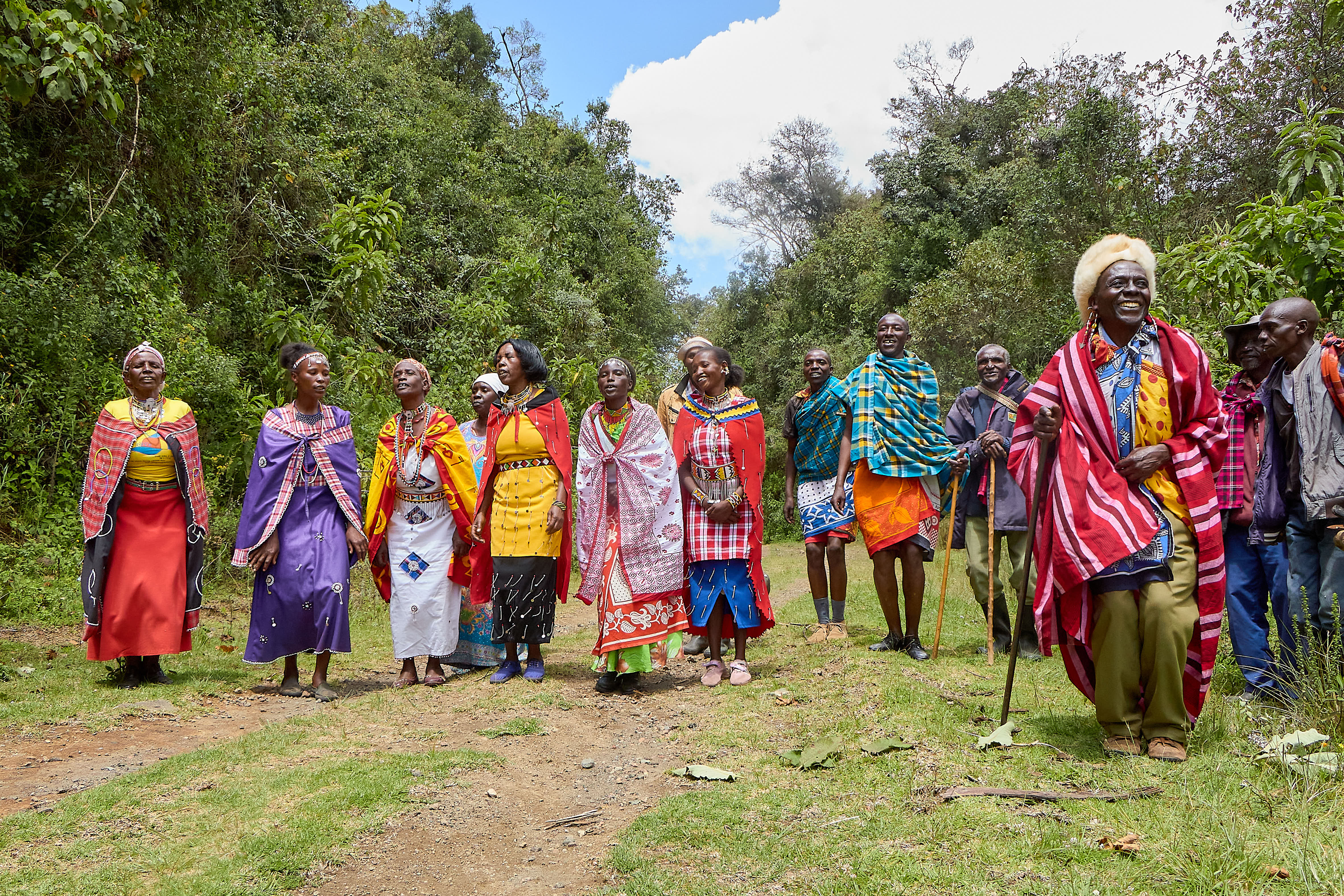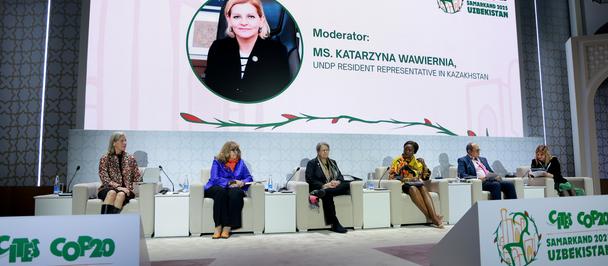Local Best Practices for Pollinator Conservation and Landscape Restoration
Preserving Indigenous Wisdom
November 21, 2022

Songoroi village, adjacent to the Eburu forest, is a cosmopolitan village hosting different ethnic communities and a hub for diverse cultures, languages and local and indigenous knowledge practices. According to Joseph Karanja, BES-Net Indigenous and Local Knowledge Project Officer, “Songoroi community is a manifestation of living in harmony with nature and with diverse ethnic communities”. Most of these communities migrated to the area in the early 1990s, following the 1992 political clashes.

Ogiek community is the native community in this area. From time immemorial, the Ogiek people in this area have lived in the Eburu forest (one of the 22 gazetted forest blocks in the Mau Forest Complex), solely relying on the forest’s natural resources for food, livelihood, shelter and medicine. They traditionally practised beekeeping and harvested honey as one of their main sources of food, especially during droughts, famines and calamities. More than a staple, honey has a significant symbolic value embedded in the Ogiek culture and identity, permeating cultural practices such as sacred rituals. Even to this day, honey is still used as a dowry for marriages.
The Ogiek way of life – especially the community’s relationship with nature – has significantly contributed to the preservation of the forest’s biodiversity. But due to human encroachment, illegal logging, charcoal burning and forced evictions of forest dwellers whose indigenous knowledge helped to preserve biodiversity, the Eburu forest has suffered massive land degradation. As a result, the Ogiek community has been displaced, with limited access to indigenous food and forced to look for alternative source of livelihoods. Alienation from their ancestral land caused the erosion of the Ogiek’s indigenous knowledge traditionally passed down from many generations, stripping them of their identity. As Reuben Njuguna, a non-Ogiek nicknamed “karani” or community secretary, said, “Taking Ogiek people away from the forest is like taking fish out of the ocean.” This indicates other communities’ acknowledgement of the role of Ogiek community in forest conservation.
Taking a walk for pollinators and the land
Recognizing the immense value of indigenous peoples and local communities’ knowledge regarding biodiversity conservation and land restoration, the Kenya National Trialogue Secretariat (represented by the Ogiek Peoples Development Programme, National Museums of Kenya and the Kenya Forestry Research Institute, which currently impements BES-Net’s BES Solution Fund in Kenya) held an indigenous and local knowledge walking workshop in Eburu from 29 September to 1 October 2022 with support of UNDP and UNESCO.
Organized as a community-driven peer-to-peer dialogue, the workshop aimed to document indigenous knowledge of pollinator conservation, landscape restoration and management systems practised by communities in the Eburu ecosystem. The participants appreciated their learning experience and showed willingness to share and learn multiple best practices with and from other communities. This approach paved the way for cultural and knowledge exchange between local and external indigenous and local knowledge holders, encompassing beyond the Eburu forest community.
The walking workshop involved two fieldwork sessions – visiting farmland in the Sorongoi village and the Eburu forest reserve – to identify key pollinator species and plants in a managed ecosystem and wild pollinator species and plants with cultural value and useful for pollination and land degradation neutrality. The farmland walking workshop was organized in the farm of Mr. Julius Mwenje, who adopted a hybrid knowledge systems to sustainably manage his farm. For instance, he practices fallow farming systems to allow farmland to naturally replenish and reduce soil degradation. To further prevent soil erosion, he conducts contour farming and erect gabions using available local resources and practices organic farming by using homemade fertilizers and pesticides, primarily produced using rabbit urine. In addition, he does intercropping to increase fertility, reduce surface run-off, enhance weed control and minimize risk in case of certain crop failure. Mr. Mwenje has adopted three main practices of enhancing pollinator conservation: (a) installing traditional beehives in his farmland for honey production and to enhance pollination, (b) planting pollinator-friendly trees, including fruit trees and flowers and (c) planting and conserving trees around his homestead to serve as a living fence, harbour pollinators and act as wind breakers. The farmland was noted as a potential model demonstration farm in putting forward best practices under BES Solution Fund implementation in Kenya.
In the forest walking workshop, guided by knowledge holders from the Ogiek indigenous community, pollinator-friendly species as well as other pollinators were identified. Multiple forest uses were also identified, including harvesting of wild fruits and vegetables (food), honey production (food), medicinal plants (health), grazeland (agriculture), aesthetic value, spiritual/religious values and other sociocultural values (e.g. some plants are essential in rite of passage for the Ogiek community).
Through the walking workshops, participants recognized and appreciated the need to document other pollinator species besides the well-recognized honeybees and raise awareness regarding their contributions to the ecosystem as well as the contributions of plant species with several benefits, including improved pollination, land degradation neutrality and medicinal value. They also emphasized the need to conduct community training for producing other honeybee products, such as propolis and beeswax, which is a potential area of work under the BES Solution Fund.

From walk and talk to tangible action
In addressing the gap in intergenerational knowledge transfer among local communities, the event sought to promote indigenous and local knowledge as a parallel knowledge system and weave it into the much wider conservation efforts of the BES Solution Fund in Kenya.
The organizations involved will translate the documented knowledge into communicable products in English and Swahili:
- Two video documentaries showcasing indigenous and local knowledge on pollinators, land management systems and plant species significant for pollination conservation and land degradation neutrality
- A booklet documenting the gathered knowledge from the community concerning pollinators, pollinator conservation and land management
- A photo essay featuring valuable pollinator and plant species documented during the walking workshop.
Once the products are developed, the Kenya National Trialogue, led by the OPDP and the National Museums of Kenya, will organize a review workshop to ensure that the information documented accurately represents the communities’ knowledge, practices and feedback from the walking workshop. Then, with UNESCO’s support, the team will administer a dissemination workshop to share the final products with the participating community for their wider distribution and utilization.
Indigenous and local communities have had centuries-long interactions with the natural world, and from these interactions came the generational knowledge and wisdom that have been keeping societies and the environment intact. In the face of the climate crisis, it is high time that indigenous and local communities be given their voice back to safeguard their valuable knowledge. Initiatives promoting knowledge exchange among local communities will significantly contribute to preserving indigenous wisdom — the key to restoring our ailing planet.

 Locations
Locations


